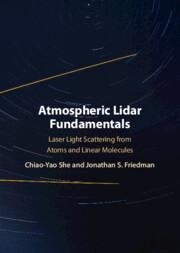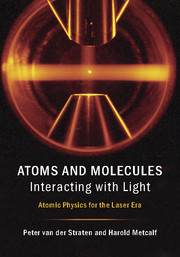Atmospheric Lidar Fundamentals
Lidar is a remote sensing technique that employs laser beams to produce a high-resolution, four-dimensional probe, with important applications in atmospheric science. Suitable as a detailed reference or an advanced textbook for interdisciplinary courses, this book discusses the underlying principles of light-scattering theory and describes widely used lidar systems in current research, exploring how they can be employed effectively for atmospheric profiling. This self-contained text provides a solid grounding in the essential physics of light-matter interactions and the fundamentals of atmospheric lidars through a discussion of the principles that govern light-matter interactions and an exploration of both historical and recent scientific developments in lidar technology. This is an essential resource for physicists, optical engineers and other researchers in atmospheric science and remote sensing.
- Presents a detailed treatment of the underlying principles of light-matter interactions, and how they relate to modern lidar research and applications
- Provides a concise summary of laser light scattering and atomic/molecular spectroscopy, essential for researchers seeking to understand the fundamental optical processes behind atmospheric lidars
- Describes underlying optical and electro-optical technologies required to optimise the performance of lidar receiver systems
Reviews & endorsements
'This book contains an extensive and thorough coverage of basic light-scattering theory and atmospheric lidars. There is a broad variety of fundamental issues … and applications … that provide concrete illustrations of the methods developed in this book. This is an interdisciplinary textbook in the field of applied optics, overlapping the disciplines of atmospheric lidars and optical spectroscopy. The material will be of interest to a great variety of readers, including graduate students in physics and optics, researchers and optical engineers.' Christian Brosseau, Optics and Photonics News
Product details
No date availableHardback
9781316518236
400 pages
250 × 175 × 23 mm
0.75kg
Available
Table of Contents
- Forward
- Preface
- 1. Introduction
- 2. Classical light scattering theory
- 3. Semi-classical treatment of light absorption and scattering from atoms
- 4. Rayleigh and Raman scattering from linear molecules
- 5. Introduction to lidar remote sensing and the lidar equation
- 6. Common (broadband) lidar types and associated applications
- References
- Index.






